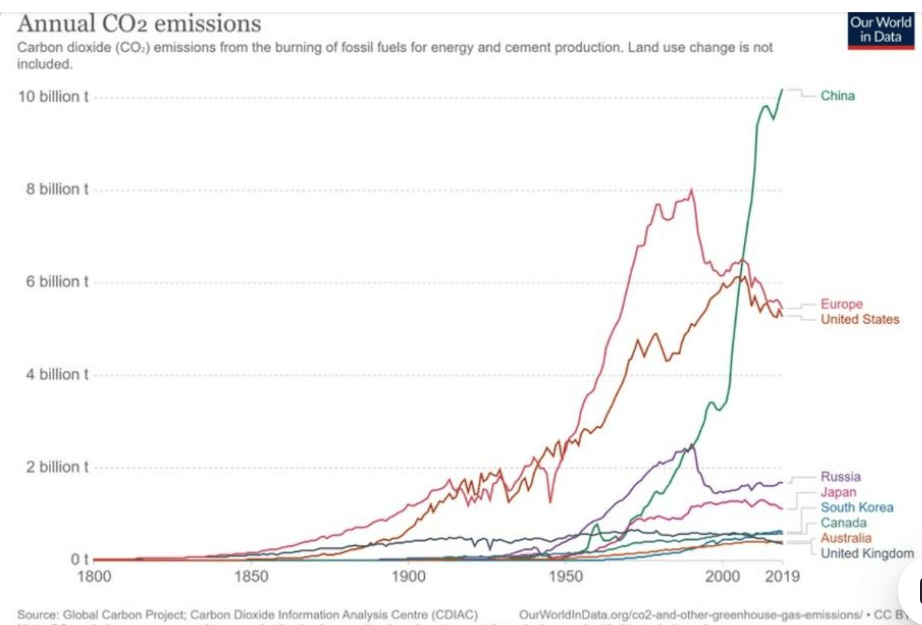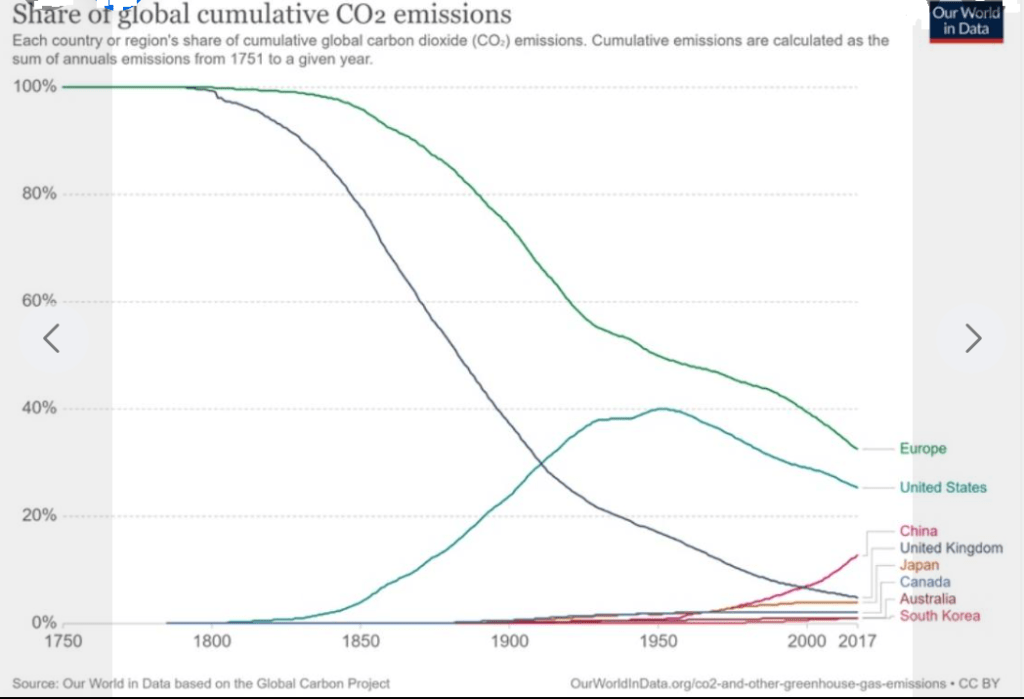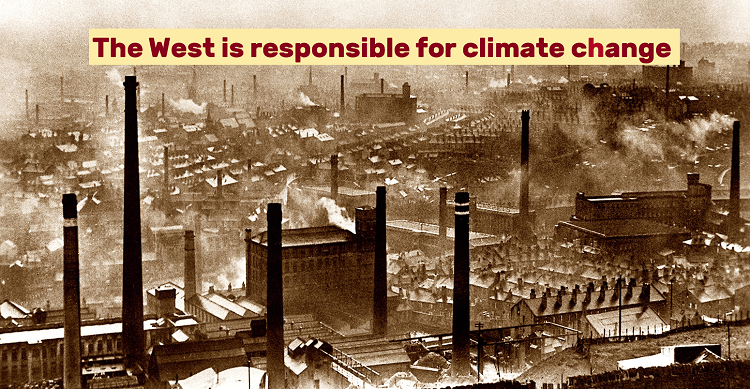The Western focus on China as “the world’s worst polluter” is devious and dishonest – and racist. The purpose of this article is to present the facts on CO2 emissions.
China is of course the world’s most populous nation, although India was predicted to surpass China by mid-2023. This is very convenient for Western anti-China rhetoric, as it makes it easy to setup a “straw-man” comparison to the USA or individual European states. It is also exploited by the West in its xenophobic psychological warfare against China.
The way in which data is aggregated, or in this case, disaggregated, has a huge influence on perception and the capacity for demonization of China and its government. However, if we aggregate the same data in a slightly different way, the underlying data is not altered, but the “obvious” conclusions suddenly appear as less “objective” and clearly politically motivated
For the purpose of comparison in this article we consider “the West” to be the USA, Europe, Japan, South Korea, UK, Canada, and Australia.
Below we consider the West as a geopolitical aggregate, or bloc, and compare it with China in respect to climate change. When this is done, the basis of a very different narrative emerges.
KEY POINTS CONCEALED BY COMPARING CHINA THE MOST POPULOUS NATION WITH INDIVIDUAL WESTERN COUNTRIES
- China and the Western industrialised countries each account for about 18% of total world population. The difference in population between China and the Western nations is less than 1%.
- Between them, China and the Western countries make up 38% of the world’s population and produce 69% of global annual CO2 emissions.
- China’s annual CO2 emissions are 13% (3.1 billion tonnes) less than the West’s annual emissions.
- China’s per capital CO2 emissions (6.86 tonnes) are about half of those of the West’s average of 12.1 tonnes, and only 41-44% those of Canada (15.59 t), USA (16.16 t) and Australia (16.88 t).
- China’s cumulative CO2 emissions (220 Bt) are only 19% of world cumulative emissions, while the West is responsible for at least three quarters of global cumulative CO2 emissions.
- China’s net share of CO2 emissions embedded in international trade is negative (-10%). Whenever a good is imported we need to include all CO2 emissions that were emitted in the production of that good, and vice versa to subtract all CO2 emissions that were emitted in the production of goods that were exported. In China’s case, this means that 10% of its annual CO2 production needs to be deducted and credited to the importing country where the products are consumed (USA, Europe, etc).
Population (billions)
- China = 1.444 (18.36 % of world population)
- West = 1.390 (17.67 % of world population)
- China + West = 2.980 (38 % of world population)
- World = 7.865
Annual CO2 emissions (billion tonnes – Bt)
- China = 10.7
- West = 13.8
- China + West = 23.98 Bt (69% of total world emissions)
Per capital CO2 emissions (tonnes)
- China = 6.86
- USA = 16.16
- Europe = 7.54
- Japan = 9.31
- S Korea = 12.15
- UK = 5.82
- Australia =16.88
- Canada = 15.59
Cumulative CO2 emissions (Bt) in 2019
- China = 220 (14% of world total cumulative emissions)
- West = 1146 (74% of world total cumulative emissions)
- China + West = 1366 Bt (87% of world total cumulative emissions
Share of CO2 emissions embedded in trade
- China = – 10.01 %
- USA = + 6.31 %
- Japan = +15.56 %
- S Korea = + 8.36 %
- U K = +42.1 %
- France = +33.21 %
- Australia = – 8.9 %
- Germany = +14.06 %
- Italy = +33.84 %
- Canada = + 0.31 %
Scroll through 4 graphs
- Annual CO2 emissions
- Per capita CO2 emissions
- Per capita consumption-based CO2 emissions
- Share of global cumulative CO2 emissions
Notes
For a realistic comparison we have have taken 8 geographic entities which between them produce 69% of the world’s annual CO2 emissions – China, USA, Japan, South Korea, UK, Canada, Australia, and Europe (all of Europe, not simply the EU – Russia is excluded).
Quite fortuitously, such an aggregation has the effect of allowing comparison of CO2 emissions from two largely equivalent populations. These geographic blocs allow for a practical comparison of the “Western” industrialised economies (lead in geopolitical terms by the USA), and the huge Chinese economy, which stands alone for the purposes of our comparison.



Sources:
- Emissions data is from the Our World in Data. https://ourworldindata.org/co2-emissions#
- Population data taken from the Worldometer. https://www.worldometers.info/world-population/population-by-country/
Author: Dr Paul Rutherford, originally published in China Environment News, 12 May 2021.
